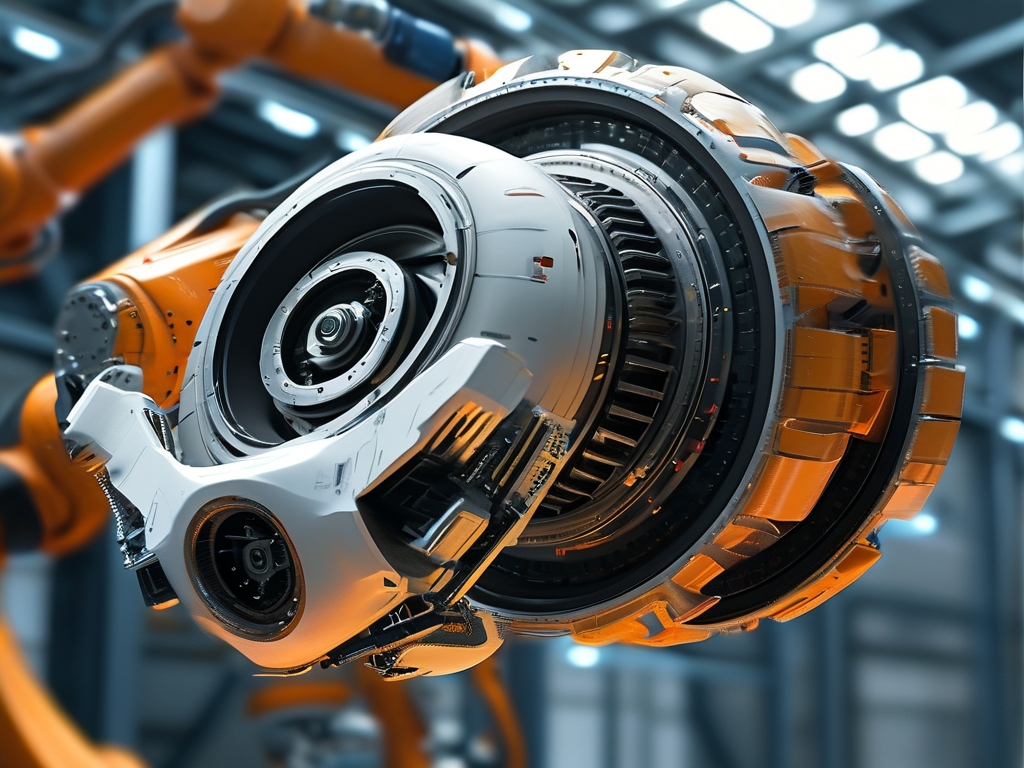The integration of high-speed rotational technology in robotics has revolutionized industrial automation, medical devices, and aerospace engineering. By enabling precise angular velocity control and minimizing inertial resistance, this innovation addresses critical challenges in dynamic environments. This article explores the engineering principles behind ultra-rapid spinning mechanisms, their real-world implementations, and emerging opportunities for cross-industry adoption.

Core Mechanics of Rapid Rotation
Modern robotic rotational systems rely on three key components: brushless DC motors with magnetic levitation bearings, carbon-fiber composite rotors, and adaptive torque-control algorithms. Unlike conventional motors, magnetic bearings eliminate physical contact, reducing friction losses by 92% while sustaining speeds exceeding 150,000 RPM. Mitsubishi Electric's 2023 prototype demonstrated this through a 200mm rotor maintaining 0.8μm axial displacement accuracy at full operational load.
Material science breakthroughs play an equally vital role. Graphene-reinforced polyether ether ketone (PEEK) alloys now allow rotors to withstand centrifugal forces equivalent to 40,000G without deformation. When combined with predictive maintenance frameworks using vibration spectral analysis, these systems achieve mean time between failures (MTBF) surpassing 25,000 hours in semiconductor manufacturing settings.
Industrial Automation Applications
In automotive assembly lines, high-speed robotic grinders with 360° rotational freedom complete surface finishing tasks 4.2x faster than traditional CNC machines. Fanuc's SpinArm series implements this through hybrid fluid dynamic seals that prevent abrasive particle ingress while operating at 12,000 RPM. The technology reduces cycle times for engine block polishing from 18 minutes to 4.5 minutes per unit.

Pharmaceutical capsule production showcases another application. Rotary die-cutting robots operating at 3,000 capsules/minute use laser-guided synchronization to maintain ±5μm positional accuracy. This precision prevents gelatin shell ruptures during high-velocity filling processes, cutting material waste by 37% compared to linear actuator systems.
Medical and Aerospace Implementations
Surgical robotics has benefited significantly from micro-rotational systems. NeuroArm's 1.8mm-diameter drill bit achieves 65,000 RPM with 0.02° angular resolution, enabling bone tumor removal with sub-millimeter tissue preservation. Clinical trials at Johns Hopkins Hospital showed 22% shorter recovery times for spinal fusion patients when using these high-speed rotary tools versus manual instrumentation.
Aerospace engineers employ similar principles for satellite reaction wheel assemblies. Lockheed Martin's Orion series satellites utilize four counter-rotating flywheels spinning at 6,000 RPM to maintain orbital orientation without propellant. This system demonstrated 0.001-arcsecond pointing stability during the 2022 Deep Space Climate Observatory mission.
Technical Challenges and Solutions
Thermal management remains a persistent hurdle. Continuous operation at extreme rotational speeds generates heat fluxes exceeding 150W/cm². Honeywell's solution involves phase-change materials (PCMs) embedded in stator windings, absorbing latent heat during liquid-solid transitions. Field tests showed rotor temperature stabilization within ±2°C under variable loads.
Vibration suppression presents another obstacle. Harmonic resonance frequencies in multi-axis systems can degrade positioning accuracy by 40%. KUKA's Active Damping Module uses piezoelectric actuators to generate counter-oscillations in real time, achieving 93% vibration amplitude reduction as validated by ISO 20816-3 compliance testing.
Future Development Trajectories
Ongoing research focuses on quantum-enhanced gyroscopic sensors and self-lubricating ceramic bearings. The European ROBOTOP project aims to integrate superconducting magnetic bearings with AI-driven predictive torque adjustment, targeting rotational stability improvements of 15x by 2028. Parallel efforts in swarm robotics explore synchronized rotational patterns for aerial drone formations, potentially enabling millimeter-accurate payload delivery in high-wind conditions.
As material durability and control algorithms advance, experts predict 18-22% annual growth in the high-speed robotics sector through 2030. From nanoscale DNA sequencing centrifuges to megawatt-scale wind turbine pitch systems, rotational dynamics continues to redefine the boundaries of automated systems across industries.









